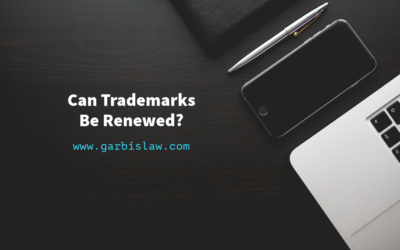At first glance, the trademark process seems relatively simple where you say “I can just do this on my own!” Then you receive your first office action from the USPTO and you’re thinking maybe you should have gone to an attorney.
Let’s break down the trademark registration process a bit so you have a better idea of what you’re getting yourself into.
When to think about trademarks
You should start thinking about trademarks before you even start your business. Your name is your brand. It is what you want people to recognize you buy and to identify you with. Keeping trademark law in mind when naming your company will go a long way. Even if you aren’t ready to start using your mark yet, you can still apply for protection.
You can reserve a mark by submitting an “intent-to-use” application and once you begin using your mark “in commerce,” you can convert it to an “in-use” application.
Do I need to perform a search before I register my mark?
It’s always advisable to complete a trademark search prior to applying for registration. The extent of the search is up to you. The USPTO database should be search by a qualified professional in order to assess whether or not there something already registered or pending that may block your application. There are more in depth comprehensive searches you can order as well, which search a number of databases and yield more results. These searches look for common law marks as well.
What are common law marks?
Federal registration isn’t actually required to have some trademark rights. These rights are known as common law rights and they arise from continuous use of a mark. The problem is that they are geographically limited and only extend to the places where a trademark has been used in commerce. With that being said, federal registration will put the whole nation on notice that you are claiming rights to the mark. With the internet being the way it is today, it is extremely important to register with the USPTO and secure your federal rights.
What’s the difference between TM and ®?
You most likely have seen a number of marks and logos that have a small TM or a ® visible. Ever wondered what the difference is? It’s actually pretty easy to remember. TM is used to create notice that you are claiming your common law rights. It should be used when your mark is not registered or you have an application pending. ® may only be used once you have successfully obtained a federal trademark registration. Intentional use of the registered symbol even though you know your mark is not registered can get you in some trouble. Oftentimes people just don’t know the difference between the two and think these symbols are interchangeable.
How long will it take to register a mark?
That all depends on whether or not the USPTO issues any letters or office actions. Once you submit your application, it won’t even be assigned to an examiner for three to four months. The examiner will then perform a review that will take a couple of weeks and determine whether or not to issue an office action or allow the application to proceed. If it is allowed, it will continue on to publication for a month where anyone will be able to oppose the registration. As long as there is no opposition, you will then receive a notice of allowance and finally registration. Even if your application goes through smoothly it will take at least 6-9 months and it wouldn’t be a surprise if registration takes longer than a year.





